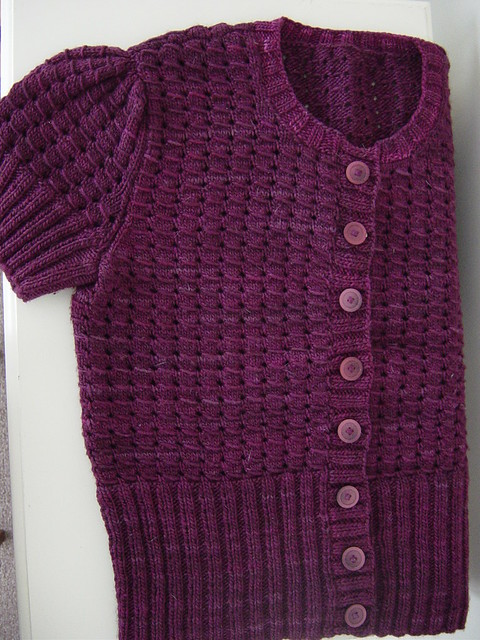The service contract extends to non-handmade knitted items, too. For example, my dad has a large and well-loved collection of wool socks that sees a lot of use. I've restitched toes, pulled together small holes, and patched large losses in the knitted fabric to keep these favorite socks going for another season or two. In fact, I enjoy the mending process so much that sometimes I "adopt" sweaters from Goodwill and repair tiny moth holes to restore their wearability.
One of my favorite mending techniques is detailed in Kate Gilbert's "Darn It All!" post on the Twist Collective blog. It's option #4, reknit and graft, which creates a new flap of fabric that covers the hole neatly and cleanly. I like to use a contrasting color so that the patch is pleasingly obvious. Somehow, this visible sign of repair feels significant, like the physical manifestation of care, love, and time. For more on these themes, check out Tom of Holland's wonderful blog about his visible mending practice.
Anyway, my sister-in-law recently gave me her favorite pair of handknit gloves, which had developed rather alarmingly large holes in each thumb. I've worked on these gloves before when they needed a small repair on one of the fingers and I know they were made by someone special and are both used and treasured (the ideal combination for knits) by my sister-in-law. I warned her that the holes may be difficult to repair, but vowed to do my best by them and the original knitter.

These holes were too big to stabilize and close up and I knew that my favored knit patch method wouldn't be appropriate either. It would be awkward to work a patch onto the structure of the thumbs and I worried that the resulting mend would be too bulky. It was time to learn how to darn. Despite all my experience repairing knits, I'd never actually executed a true darn.
I checked out a few tutorials, found a good matching yarn, took a deep breath, and dove in, opting for a slightly larger darned area to give the fabric around the hole greater stability and reinforcement. I'm pretty happy with the results, though next time I'll try for a tidier finish. On the upside, the hole is long gone, the new woven area is dense but still flexible, and any fraying or unraveling that had started with the hole has been stopped. I'd say it's a successful first (and second) darn.



